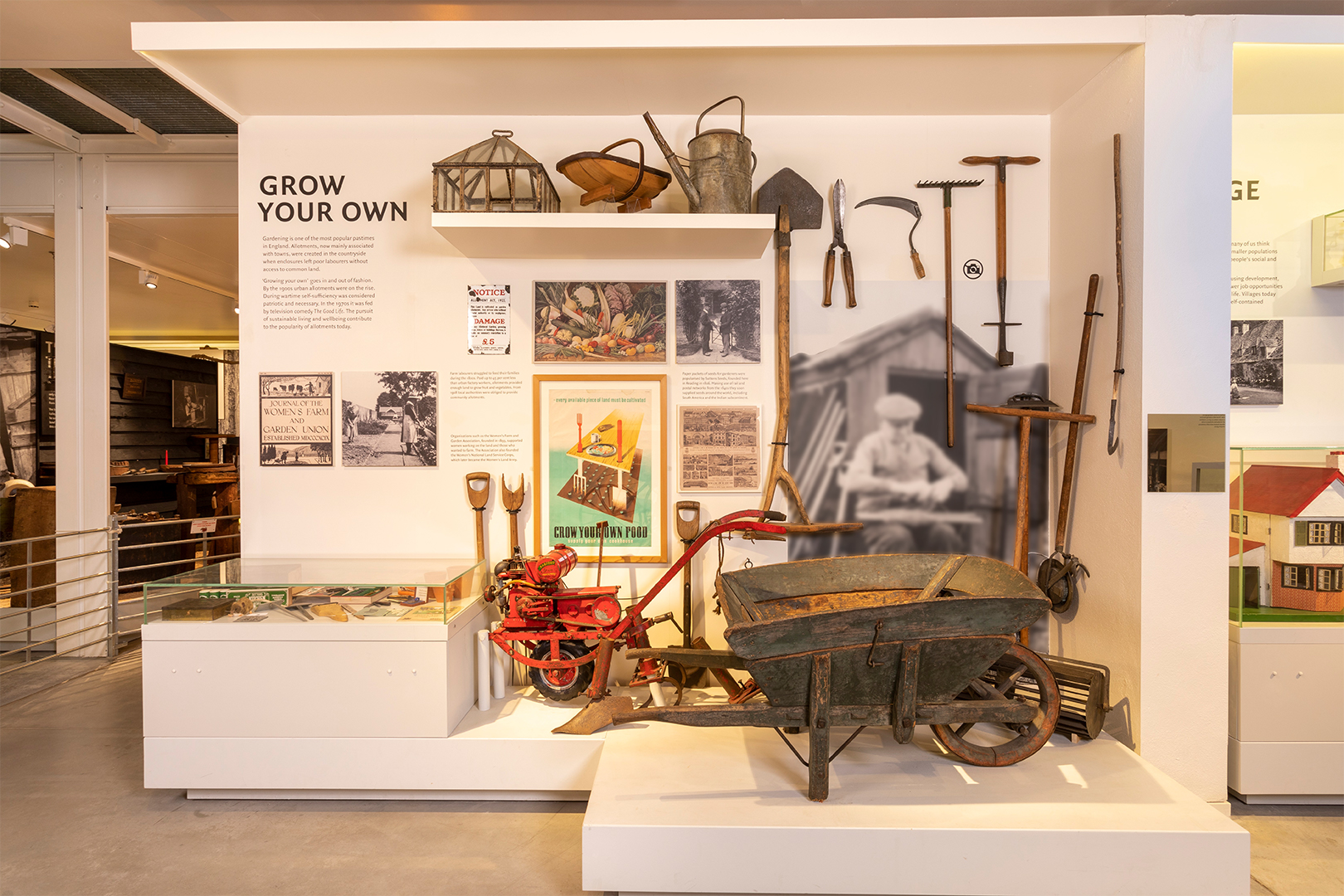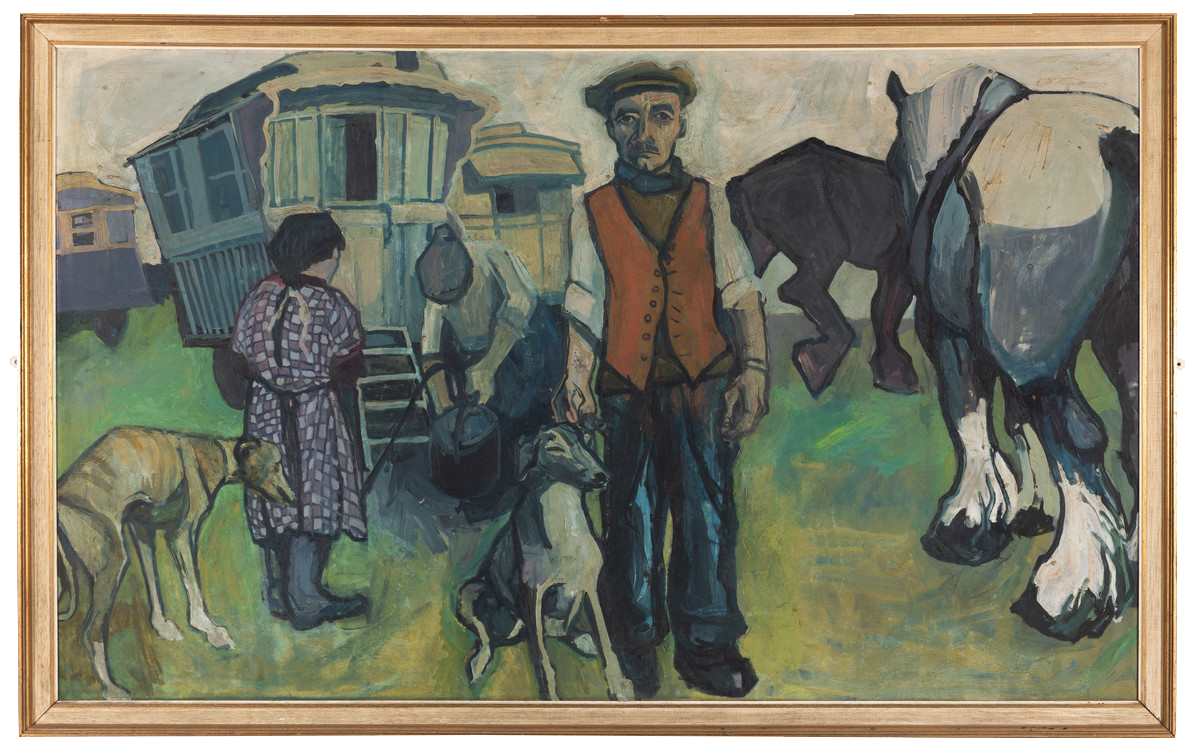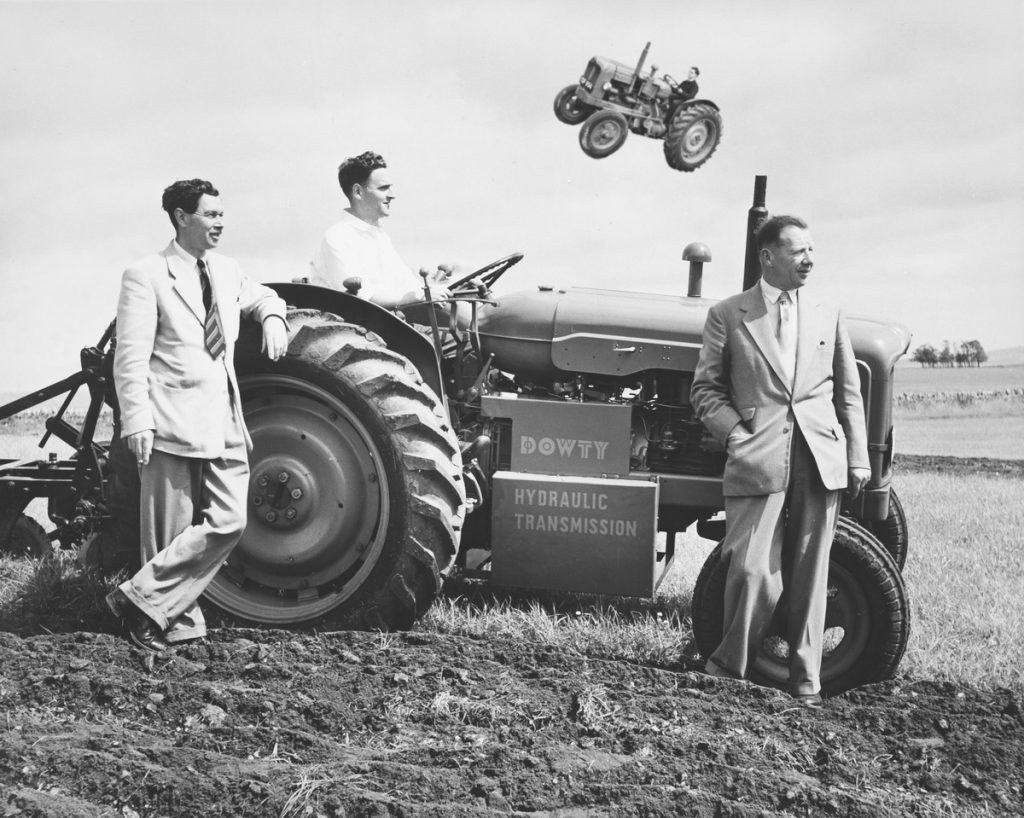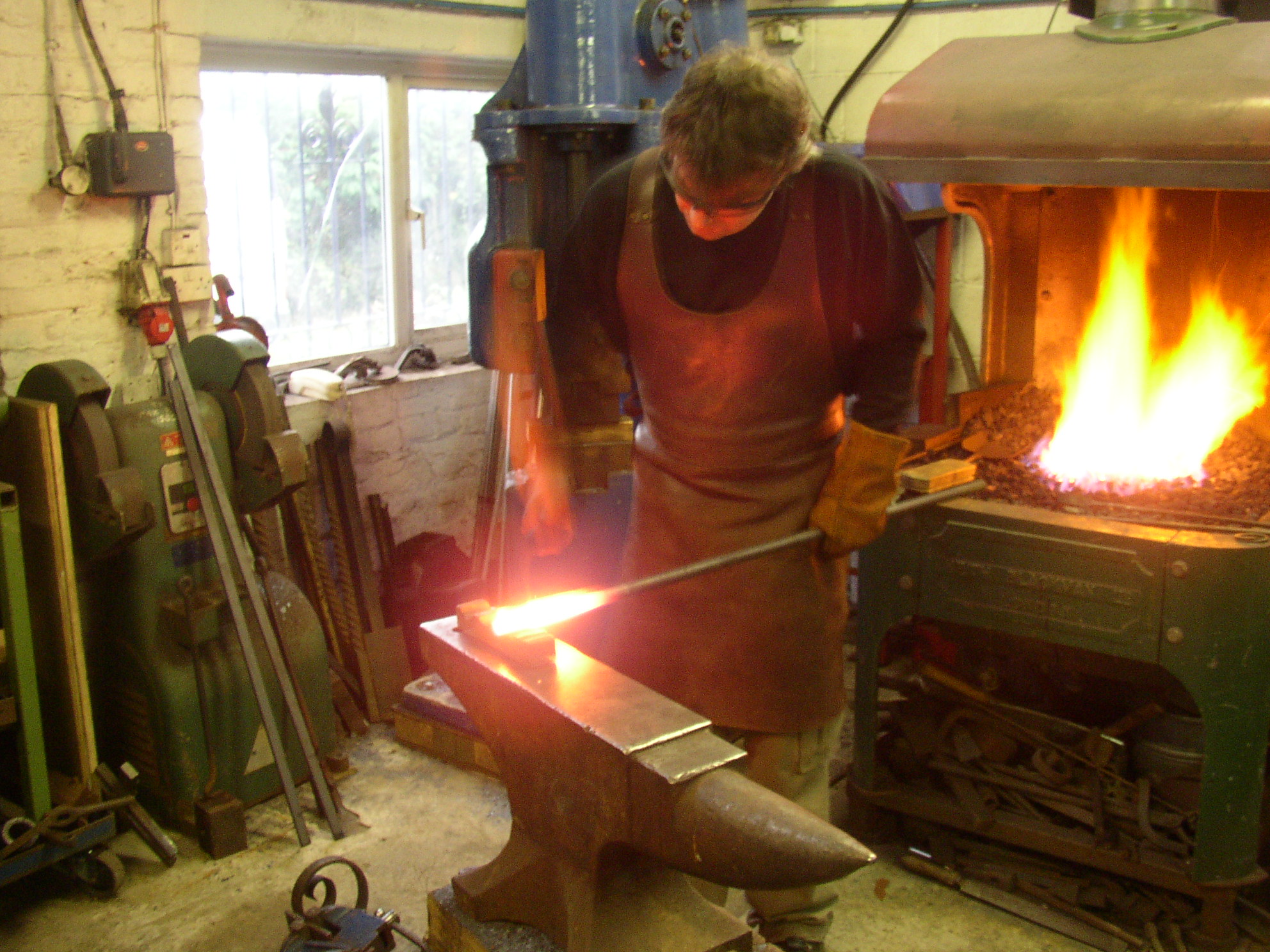The Building Connections project
Since the redevelopment of The MERL galleries in 2016, we have learned from feedback and evaluation that many of our visitors would like to know more about the objects in our galleries. How were they used? What were their stories? In what ways are they meaningful and relevant in our lives and the world today?
With these questions in mind, we began the Building Connections project, made possible through generous funding from Arts Council England. The project aimed to create new ways for visitors to learn about the history of the English countryside through our objects and collections. We wanted to expand on the stories we were telling, and doing this whilst involving and amplifying voices of people from underrepresented backgrounds that have historically been overlooked by rural archives and omitted from portrayals of countryside life.
In this blog, join The MERL’s two Building Connections project officers, Nicola Minney and Tim Jerrome, as they reflect on the Building Connections project: from the project’s beginnings and objectives, to everything accomplished over the course of the last two years.
Did you know it’s illegal to make Stilton in the village of Stilton?
The Building Connections project began and ended in a global pandemic. Whilst The MERL has long been committed to sharing its work and collections with online audiences, the impact of COVID-19 meant it had never felt more critical to make the full breadth of the museum’s collections available for audiences to explore and enjoy both in our galleries and online. It meant that producing a strong digital output in the interpretation we were creating became a key component of our planning.
When we started our work, the museum was already underway creating online exhibitions, bringing together collection objects and archives around specific themes. Several of these had enjoyed significant success: from Smocks, Smocking, Smocked, a deep-dive into the history of (well, you guessed it) smocks, to ANIMERL CROSSING, a round-up of creative responses to that very same smock collection produced in the videogame Animal Crossing (as part of a creative challenge shared on Twitter).
As we began scoping out our plans, we recognised that the museum’s online exhibition platform offered huge potential for creating interactive versions of our current gallery displays. There, we could share large amounts of information about The MERL’s collections, objects and displays, which would be available for the enjoyment and discovery of visitors in person and online. These virtual labels could include facts about objects’ histories, donors or makers, and their wider contexts.
For instance: did you know that it is illegal to make Stilton cheese in the village of Stilton? You do now, and that is one of many facts included in the first round of digital labels that we have been busy creating.

As we researched the hundreds of museum objects displayed across The MERL galleries, we were extremely grateful for the incredible contribution of a small army of fearless volunteers. Fifteen in total helped us complete our research, with each bringing to the project their unique research interests, expertise, and styles.
As we write, testing of these online exhibitions is underway in The MERL galleries, where, like so much else during the pandemic, they can be accessed and explored through QR codes. Shortly, we will be making all the virtual interpretation available for our online visitors to delve into and enjoy, wherever in the world you might be, and we would certainly love to hear your thoughts about what we’ve made at that time too.
Reflecting lived experience in rural history
A critical element of the Building Connections project has been providing a platform to people from underrepresented communities, addressing their omission from the narratives of the past, and creating strong foundations for the museum to continue this work into the future.
We worked with a range of partners, artists and organisations to explore and develop how LGBTQ+ history is represented in The MERL. A major output of this work was our exhibition Queer Constellations, created to accompany Tim Allsop’s play The Stars are Brighter Here which was performed at The MERL in July 2021. Queer Constellations shared stories of queerness in the countryside, both historically and in the modern day. An accompanying display of MERL objects represented the lives of rural gay men who we found through Ancestry, newspaper archives and the Broken Futures project by local organisation SupportU. This offered a new way of examining these men’s lives, as we looked beyond the criminal conviction records which are usually the key source for finding them.
Alongside The MERL object collection, we worked with guest curator Joe Jukes and a broad range of artists to create a multimedia display of artworks. These demonstrated the varying ways queerness is lived outside of typical urban settings. The exhibition was displayed from July to September in The Nook and was accompanied by an online exhibition. We also hosted a day for the contributing artists to come and see their work, and come together to discuss the exhibition. Watch highlights from the day in our film!
During Gypsy, Roma, and Traveller History Month (GRTHM), June 2021, we explored stories of Gypsy, Roma and Traveller communities across the UK. We shared historic images from our collection on our social media feeds, which even led to the identification of a previously unknown man in one of our archive photographs! We created an online exhibition, delving into a mysterious painting that is currently on display in the galleries.

Whilst some information is known about the donor, the artist and sitters are shrouded in mystery. It was a perfect backdrop for an introduction to some of the key aspects of GRT life.
We also supported The MERL’s Learning and Engagement team to produce a school session exploring migration for Garland’s Primary, where several students from the GRT community were able to share their own knowledge with us and enthusiastically engage with The MERL collection. After hugely positive feedback from our partners in the GRT community, we are determined to continue this work into 2022. Watch this space!
As we researched our existing archives and collections, we struggled to find any significant representation of the lives and experiences of rural people of colour. It is important to challenge the historically uncontested idea of who we think of when we imagine someone who lives in the countryside, and we have been lucky enough to interview a range of inspiring people of colour about their lives and work in rural spaces for our new blog series, Changing Perspectives in the Countryside. Each of the contributors have been fantastic, kindly giving their time to reflect on their experiences, and provide their own unique interpretation of an item from The MERL collections that resonated with them. Like many of the topics covered during the lifespan of Building Connections, we hope that this will only be a starting point and our visitors will be inspired to share their experiences and perspectives with us far beyond the project’s end. This work coincided with the delivery of unconscious bias training for all staff at The MERL, which was an incredible moment of examining our current and historic biases, and how we can address these to continue building an ever-more inclusive museum well into the future.
The rise of Black Lives Matter protests in 2020 inspired us to explore the history of protest in rural spaces. We were privileged to interview Gurpreet Kaur, the organiser of a Black Lives Matter protest in Essex, to hear about her motivations and perspective. This featured in our online exhibition The Evolution of Rural Protest, chronicling the history of responses to social injustice in the countryside, dating back to the Swing Riots of the 1830s. This focus on linking the past to the present was also highlighted in the exhibition Rural Togetherness in Times of Crisis (upcoming), which seeks to show that while the challenges for rural people may change throughout history, their strong sense of community does not.
Nicola also undertook work exploring the decolonisation of The MERL collections. We worked alongside students from the University of Reading on two exhibitions exploring decolonisation and The MERL collections, which focused on the Tanganyika groundnut scheme and colonial India. Whilst there are plenty of items in the museum collection that originate from the British Empire, it is difficult in a single exhibition to neatly portray how this might have impacted a vision of empire and colony in the same way as other museum collections. Attempts were made to trace several objects back to their makers, such as a pair of snowshoes and a pair of moccasins from our Evacuee Archives (a fascinating collection). We don’t know who made either or how they ended up in England. Whilst we have made steps towards tackling this topic, including taking part in a healthy discussion with many inspiring colleagues from the Rural Museums Network, there is much more work to be done, and we certainly have more to contribute to this discussion in future.
From Horse Wizards to Farming Simulator
As well as exhibitions, we wanted to reach our wider online audience via blogposts and article. Hopefully you will have read and enjoyed some of these.
Tim’s blogs covered extremely hard-hitting topics including the history of horse wizards, the dubious existence of tractor whisperers, and the evolution of rural gaming (upcoming). He hopes to never play Lawn Mowing Simulator again.

One blog Tim remembers with pride is one that delved into the challenges of researching LGBTQ+ rural histories, relating the lessons learned from the Queer Constellations exhibitions and programme. Writing on such an historically unexplored topic was exciting and a privilege.
Nicola’s blogs were as diverse in subject matter as Tim’s, exploring ration books (upcoming), socks at Christmas, and a blog about superstition and folklore, which led to a contribution to The MERL’s 51 Voices anniversary exhibition, and a subsequent appearance on BBC Radio Berkshire. Perhaps one of her finer moments was convincing the rest of the team that a blog about Dolly Parton was absolutely vital to the project and The MERL in general. Dolly has yet to comment on the blog, but we all live in hope that one day she will notice, and our rural lives will be changed forever.
Being an archivist with an unapologetic love of cataloguing, Tim was thrilled to be able to work on the Rural Crafts Project Archive. The archive, consisting mostly of films and photographs, documents the Rural Crafts Project of 2006 to 2008, which aimed to capture footage of crafts which were at risk of dying out. These crafts included rural staples such as blacksmithing, hurdle making, and swill basket making. Despite the challenge of wrangling fifteen-year-old DVDs, almost all the footage was saved. The archive is now searchable via the online catalogue, with the photographs and a selection of films viewable via the virtual reading room.

The many subjects that we worked on were also represented in a range of online exhibitions and gallery trails, which can all be enjoyed on our online exhibition pages. We hope that more themes can be added and explored in the future.
The connections we built along the way
In delivering the project and creating new interpretation, we also had the chance to work with our colleagues across The MERL and the University’s Special Collections on various mini-projects, using the results of our research to contribute to other parts of the museum’s life and programme. This included supporting school visits (on-site and virtually), creating content for The MERL’s sessions for people with dementia, as well as producing an exhibition about the history of John Fowler and his international links.
We really hope that you’ve enjoyed and appreciated the content we’ve created as a part of Building Connections. Whether it’s been thought-provoking or challenging, academic or absurd, we feel it has all thoroughly contributed to The MERL’s narratives around the lives of rural people and societies, historically and today.
What was your favourite piece of Building Connections content? Are there any themes we didn’t look into which you think we should highlight? Let us know!

One thought on “The Building Connections project”